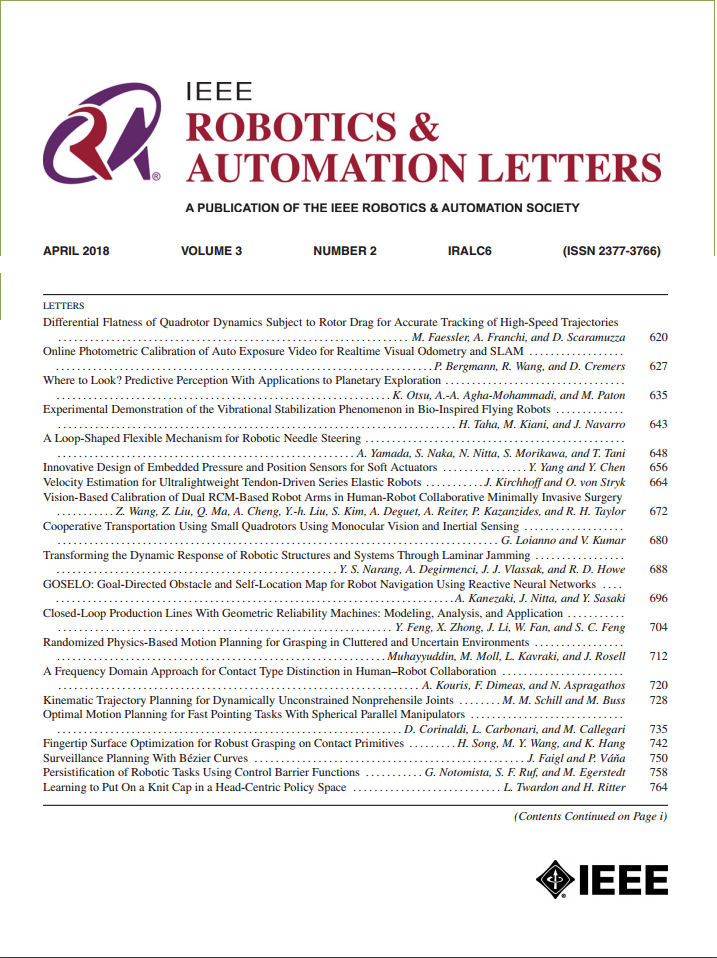Hysteresis-Aware Neural Network Modeling and Whole-Body Reinforcement Learning Control of Soft Robots
IF 5.3
2区 计算机科学
Q2 ROBOTICS
引用次数: 0
Abstract
Soft robots are inherently compliant and safe, making them suitable for humaninteractive applications such as surgery. However, their nonlinear and hysteretic behavior poses significant challenges for accurate modeling and control. We present a soft robotic system and propose a hysteresis-aware whole-body neural network model that accurately captures and predicts the soft robot’s whole-body motion, including hysteresis effects. Based on this model, we construct a highly parallel simulation environment for soft robot control and apply an on-policy reinforcement learning algorithm to efficiently train whole-body motion control policies. The trained policy is deployed on a real soft robot to evaluate its control performance, and it exhibits high precision in trajectory tracking tasks. Furthermore, we develop a soft robotic system for surgical applications and validate it through phantom-based laser ablation experiments. The results demonstrate that the proposed model significantly reduces prediction error compared to conventional methods. The overall framework shows strong performance in phantom-based surgical experiments, and demonstrates its potential for complex scenarios, including future real-world clinical applications.软机器人迟滞感知神经网络建模与全身强化学习控制
软体机器人具有固有的顺应性和安全性,使它们适合于手术等人机交互应用。然而,它们的非线性和滞后特性对精确建模和控制提出了重大挑战。我们提出了一个软机器人系统,并提出了一个能准确捕获和预测软机器人全身运动的迟滞感知全身神经网络模型,包括迟滞效应。在此基础上,构建了一个高度并行的软机器人控制仿真环境,并应用一种基于策略的强化学习算法来有效地训练全身运动控制策略。将训练好的策略应用于实际软机器人上,对其控制性能进行了评价,结果表明该策略在轨迹跟踪任务中具有较高的精度。此外,我们开发了一种用于外科手术的软体机器人系统,并通过基于幻象的激光消融实验对其进行了验证。结果表明,与传统方法相比,该模型显著降低了预测误差。整体框架在基于幻象的手术实验中表现出强大的性能,并展示了其在复杂场景中的潜力,包括未来现实世界的临床应用。
本文章由计算机程序翻译,如有差异,请以英文原文为准。
求助全文
约1分钟内获得全文
求助全文
来源期刊

IEEE Robotics and Automation Letters
Computer Science-Computer Science Applications
CiteScore
9.60
自引率
15.40%
发文量
1428
期刊介绍:
The scope of this journal is to publish peer-reviewed articles that provide a timely and concise account of innovative research ideas and application results, reporting significant theoretical findings and application case studies in areas of robotics and automation.
 求助内容:
求助内容: 应助结果提醒方式:
应助结果提醒方式:


